How to make a lawn in the country in the spring with your own hands: proper preparation of the site and sowing grass
There is hardly anything that can enhance the beauty of the garden and the area around the house better than a green lawn. According to some landscape designers, the lawn is the mirror of the garden. Indeed, a flat and green background is the ideal surface for all landscape compositions and an idea for decorating a garden.
But it is worth preparing for the difficulties, since the lawn grass needs quite serious care. And yet, the main thing is to create a lawn correctly, that is, prepare the site and sow seeds with your own hands or using a special seeder.
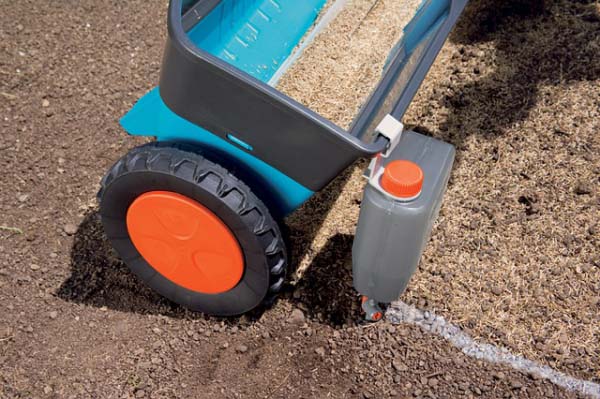
Content
Types of lawns: how to choose the right lawn grass
There are various types of lawns to suit your every need, from a small lawn to a sports field.
A lawn mixture is a specific composition (proportion) of grasses and grains that is designed to create a green lawn.
The most popular types of lawns for planting in summer cottages:
- Parterre - one of the most spectacular types, which, as a rule, is done in front of the entrance to the house or in the decorative corners of the garden. However, in a harsh winter, it can completely freeze out. In addition, it is completely unsuitable for walking, that is, it is not pedestrian, in other words, you can only admire it.

- Ordinary (garden or garden and park) - it is not so decorative, it can be walked on and it grows normally even in adverse weather conditions.
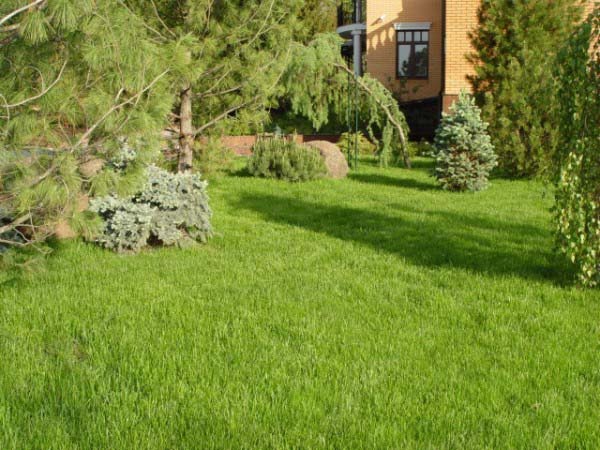
- Lugovoi - consists of grasses with hard stems (meadow timothy). The main feature of this species is that it needs to be trimmed only once a month, in other words, it is suitable for lazy summer residents. Nevertheless, walking on it is undesirable, it is not suitable for outdoor activities.

- Mauritanian.It includes cereal grasses, such as bent grass, meadow bluegrass and others, as well as flowers - poppies, cornflowers, marigolds, flax, nemesia. Its main feature is the presence of flowering plants. The main advantage is that a couple of haircuts a year are enough, the disadvantages are picky about watering, attracts bumblebees and bees.
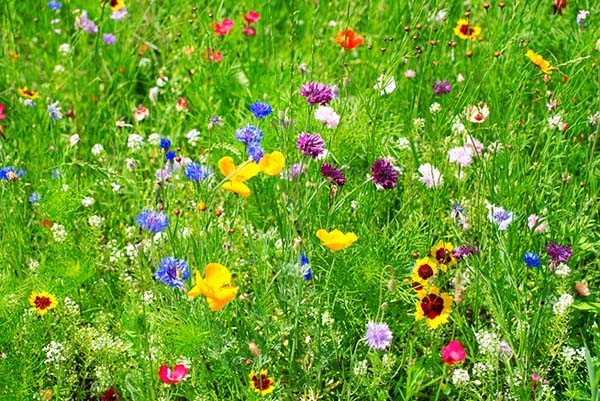
- Sports Is a sod cover, a layer of land on which herbs and steppe grasses grow. Consists of the following herbs: meadow timothy, red fescue, perennial ryegrass. The peculiarity of such a lawn is its high elasticity and density. It has the following advantages: it is resistant to frost, sweltering heat, grows slowly and, accordingly, does not require frequent haircuts, it tolerates mechanical stress and recovers quickly. Disadvantages - it requires special care and is quite expensive.

- Roll - is a very thin layer of turf, rolled into a tight roll. It does not require special care, besides the first 5 years you can forget about weeds. As a rule, it consists of meadow clover, bluegrass, bent grass and other grasses.

By the way! There are also shade-tolerant lawns with a high content of fescue. However, it is necessary to clarify that this can only be partial shade, not a single lawn grass can withstand deep shadow. And remember that the lawn will never be very thick in such conditions.
Each component in the herbal blend has a different function.
- Fescue - creates cruelty, in other words, a general cover.
- Pole grass is a very soft grass, so to speak, undercoat, which forms a basal sod well.
- Ryegrass - quickly emerges and is responsible for the density of the cover.
- Bluegrass - creates a silky and emerald grass cover.
- White clover - for making the grass decorative.
- Timothy meadow - not afraid of trampling, great for patching bald spots, but does not tolerate low haircuts.
When to sow your lawn: optimal timing
The optimal timing for planting a lawn varies depending on where you live and, as a result, the climatic conditions of the region, as well as the current weather.
As a rule, lawn grass can be sown throughout the warm period, that is, from April to September.
Spring is considered the most favorable time of the year for sowing a lawn. the shoots of the grass will have time to get strong enough for the winter.
However! Many have successfully sow the lawn in the fall (before winter).

How to prepare a plot for sowing a lawn
Before sowing a lawn in a summer cottage, you need to properly and thoroughly prepare, which means that you will have to go through several stages, each of which is very important.
Required tools
In preparing the site for planting a lawn, you will definitely need the following tools:
- shovel or walk-behind tractor (cultivator);
- rake;
- even bar;
- special roller for compacting the earth;
- special seeder;
- watering hose;
- protective gloves.
Cleaning the site from debris, weeds and other plants
After you decide on the place where you decide to sow the lawn, the first thing to do is to completely clean it of all debris (construction, household), and also get rid of old plants, for example, tree stumps and dried shrubs.
Important! If you do not clean the area well and leave woody debris in the soil, then do not be surprised if you notice toadstools later. Cleaning of the place for the lawn must be done very thoroughly.
You should also get rid of the turf layer (if you have one), for this you need a shovel or a special device to remove the turf layer.
Further, to create or remodel an old lawn from soil, you should remove all weeds, i.e. land needs good dig up... To do this, you need a cultivator (faster and easier, but more expensive) or a shovel (longer, more labor-intensive, but more economical).
Advice! After digging, be sure to collect all the weed grass with a rake, and then dig up and again collect all the remaining weeds and their roots.
There is one more method of weed control Is the use herbicides... But remember, there is no need to rush, the drugs work long enough, about 2 weeks.
By the way! In no case should the soil be prepared for vegetable crops in this way, but under the lawn - completely.
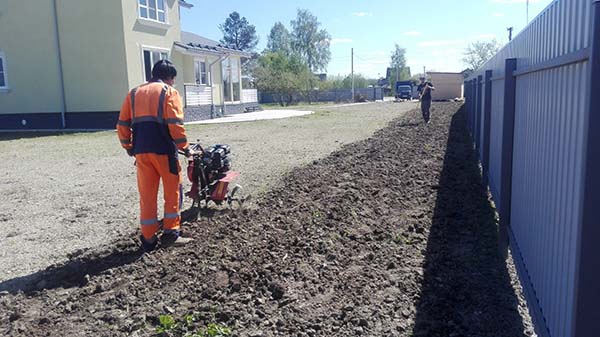
Creation of drainage and embankment of fertile soil
And if you have heavy loamy soil, or the area where you decided to sow the lawn can be flooded with rains, and water often stagnates on it, then you should make a double drainage layer: the bottom layer of coarse gravel or broken brick (10-15 centimeters ), and the upper one is made of small stones or sand (5-10 centimeters).
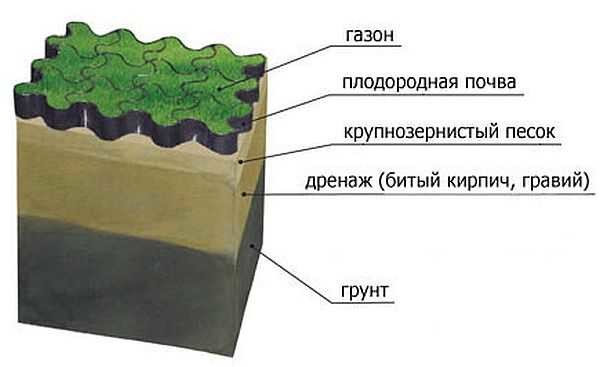
If your land is infertile, then you should bring nutritious loose soil to the site in order to lay it with a 15-20 centimeter layer. As such a soil, typical peat—sandy mixture (65% peat, 35% sand) with the addition of sod land.
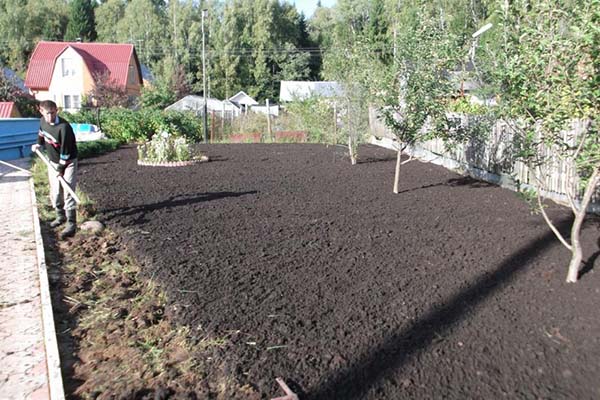
By the way! If you lay such a fertile layer under the lawn, then in the first season you will not even need to fertilize it.
Then it is recommended to add special top dressing for lawn grass to the dug soil, and then dug it up again in order to properly embed the fertilizer into the soil.
Surface leveling
The next step in preparing the soil for sowing a lawn is to level the ground surface. To do this, you should use a rake.
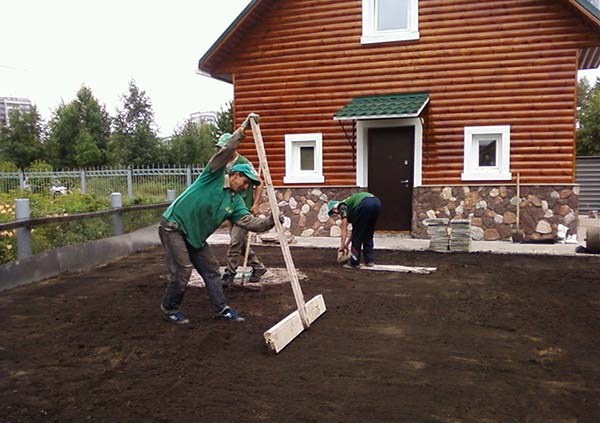
Use a roller to compact the soil and level it as much as possible. It is the rolling of the soil that will allow you to achieve a flat surface.

As a result, you should have an absolutely smooth, so to speak, perfect surface.
Advice! Make a very slight slope towards the fence to allow rainwater to drain.
Video: preparing and leveling the area for the lawn
How to sow a lawn correctly
After you have rolled the soil perfectly evenly, you can immediately sow lawn grass seeds.
How much lawn is required
Naturally, there are standards for the sowing lawn. On average, from 3 to 4 kg of lawn grass seeds per 1 hundred square meters (30-40 grams per 1 square meter), depending on the composition of the grass mixture itself and on the desired density.
Sowing rules and methods
There are not so many rules for sowing lawn grass, here are the main ones:
- The weather must be clear, dry and calm.
- Sow as evenly as possible.
The easiest way to plant a lawn is manual methodwhen seeds are scattered on the go with their own hands.
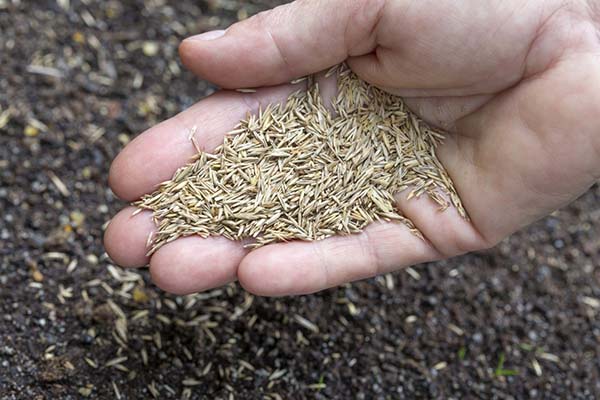
If you need to sow a large area, you can more efficiently sow your lawn using special seeder. Just walk it over the entire surface of the site, it will scatter the seeds evenly enough.

Next, the seeds follow close up with a rake, or use mulching method, in other words, cover the scattered seeds from above with a small layer of fertile soil only to lightly cover the seeds. The second termination method is more preferable due to the fact that in this case the moisture after watering will be better preserved, and the seeds will swell faster and, accordingly, germinate much more actively.
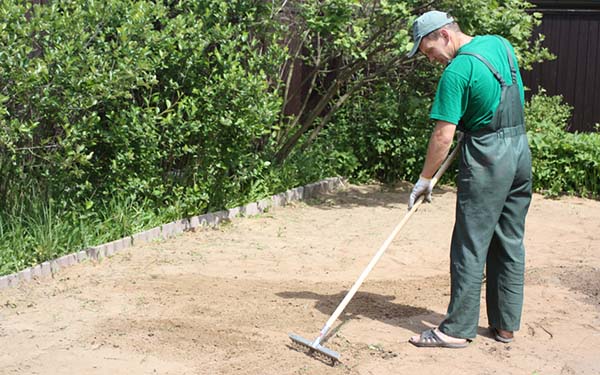
The last step of sowing lawn seeds is abundant watering from a hose with a spray (sprinkler nozzle).
Advice! After sowing, it is advisable (but not necessary) to cover the lawn to create a greenhouse effect. However, if the area is very large, then, of course, it is quite laborious to do this. And therefore, if the nights are warm, then you can do without shelter.
Video: planting lawn grass according to all the rules
Lawn care after planting
During the first few days after planting lawn grass, you should regularly, but moderately enough, water the sown area for better germination.

When young grass seedlings sprout and reach a height of 2-3 centimeters, it is necessary to roll the soil again with the help of a roller to fix their roots, because, as you know, the root system of the lawn is superficial.
Note! If after a week you notice that the lawn looks somehow not very good (sparse and grass of different heights), then there is nothing to worry about. In fact, some lawn seeds may lie in the ground and not germinate for 1 to 3 weeks, so just wait a bit.
Further, when the grass grows to 6-8 centimeters (as a rule, it takes about 3-4 weeks), its first mowing should be done, although some gardeners recommend mowing the lawn for the first time when the grass stands are about 12-15 centimeters high. In the end, you need to leave about 4-6 centimeters.
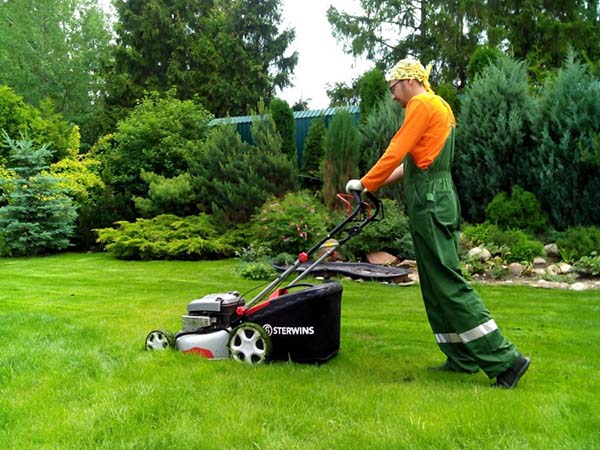
Advice! If after mowing you find bald spots on the lawn, then you should simply sow new grass in them.
The next mowing should be done when the lawn reaches 12-15 centimeters again. At the same time, it is extremely important to have time to do this before he sits down.
If before that all haircuts had to be done strictly with a lawn mower, then after the main mowing, you can start using the hand trimmer to mow hard-to-reach pieces and areas, for example, the side, the corner of the house or the edge of the flower garden.

Recommendation! If you want your lawn to live happily ever after, then do not carry the cut grass on the compost heap, but leave it on the lawn (so to speak, mulch). She will be his best food.
To do this, simply remove the grass basket from the mower and insert a stick or other object into it to allow the grass to fly out. So you do not need any additional feeding, although you can additionally water it with organic infusion.
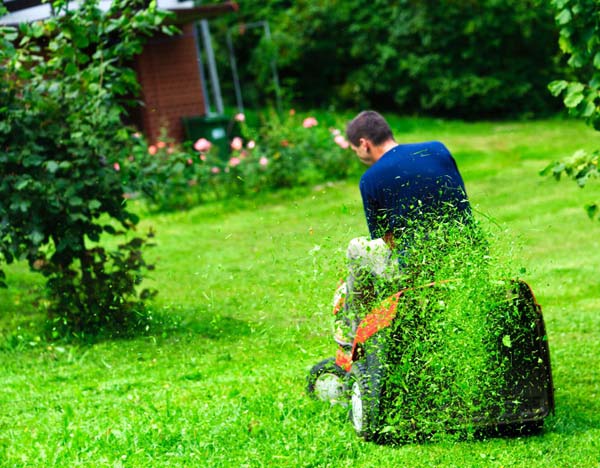
Thus, in order for the lawn at your dacha to "play" with some especially fresh emerald colors, you need to correctly determine its appearance, the choice of lawn grass, the timing of its planting, do not forget about the preparation of the site, tools, and also do not lose sight of the extremely important the subtleties of sowing and proper lawn care.
By the way! Already next season in early spring you will need to execute a number of measures for the care of the lawn and its restoration after winterwhich is described in detail in this article.
Video: how to properly prepare the land and sow the lawn with your own hands

